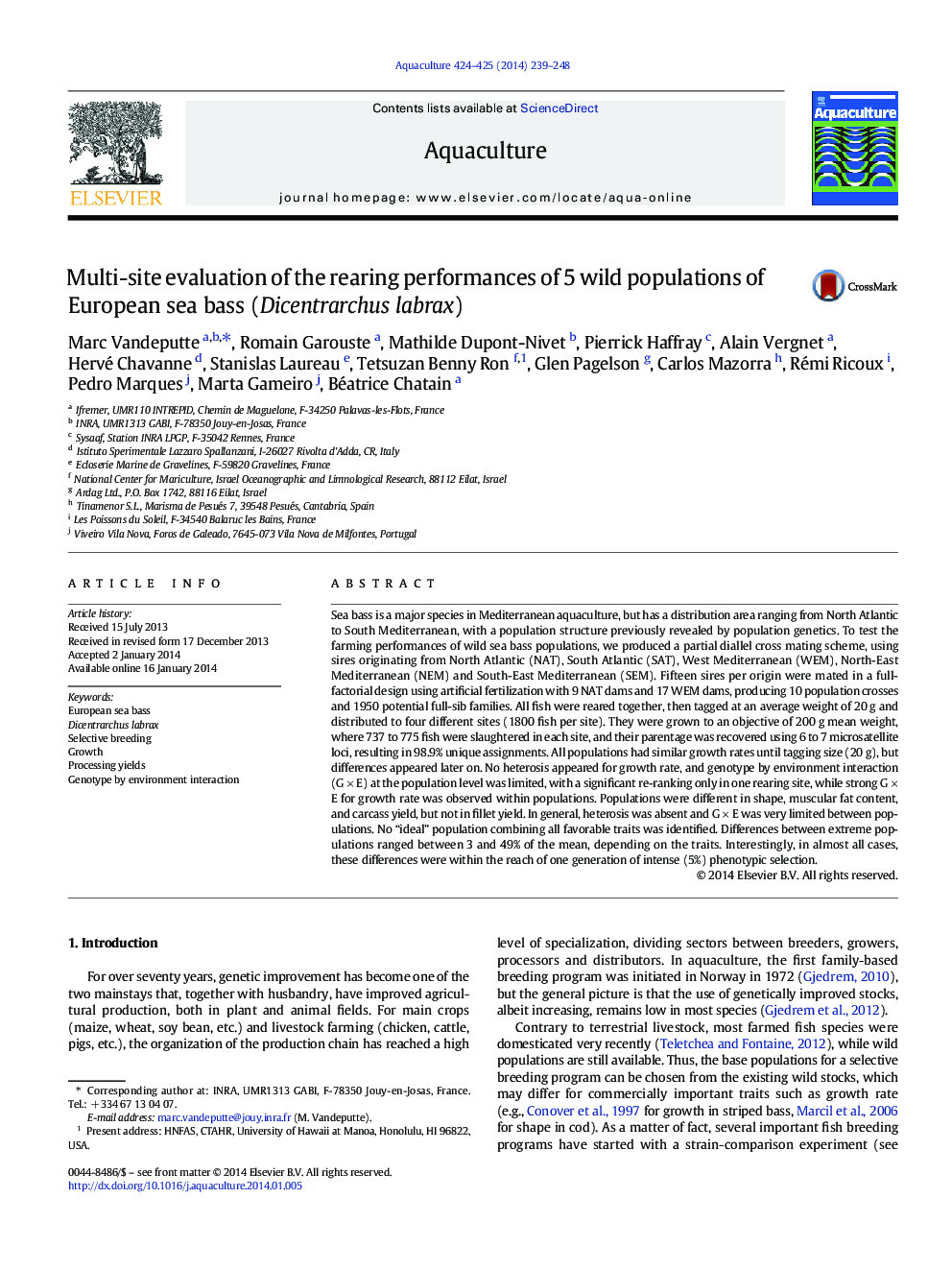| کد مقاله | کد نشریه | سال انتشار | مقاله انگلیسی | نسخه تمام متن |
|---|---|---|---|---|
| 8495228 | 1552860 | 2014 | 10 صفحه PDF | دانلود رایگان |
عنوان انگلیسی مقاله ISI
Multi-site evaluation of the rearing performances of 5 wild populations of European sea bass (Dicentrarchus labrax)
دانلود مقاله + سفارش ترجمه
دانلود مقاله ISI انگلیسی
رایگان برای ایرانیان
کلمات کلیدی
موضوعات مرتبط
علوم زیستی و بیوفناوری
علوم کشاورزی و بیولوژیک
علوم آبزیان
پیش نمایش صفحه اول مقاله

چکیده انگلیسی
Sea bass is a major species in Mediterranean aquaculture, but has a distribution area ranging from North Atlantic to South Mediterranean, with a population structure previously revealed by population genetics. To test the farming performances of wild sea bass populations, we produced a partial diallel cross mating scheme, using sires originating from North Atlantic (NAT), South Atlantic (SAT), West Mediterranean (WEM), North-East Mediterranean (NEM) and South-East Mediterranean (SEM). Fifteen sires per origin were mated in a full-factorial design using artificial fertilization with 9 NAT dams and 17 WEM dams, producing 10 population crosses and 1950 potential full-sib families. All fish were reared together, then tagged at an average weight of 20Â g and distributed to four different sites (1800 fish per site). They were grown to an objective of 200Â g mean weight, where 737 to 775 fish were slaughtered in each site, and their parentage was recovered using 6 to 7 microsatellite loci, resulting in 98.9% unique assignments. All populations had similar growth rates until tagging size (20Â g), but differences appeared later on. No heterosis appeared for growth rate, and genotype by environment interaction (GÂ ÃÂ E) at the population level was limited, with a significant re-ranking only in one rearing site, while strong GÂ ÃÂ E for growth rate was observed within populations. Populations were different in shape, muscular fat content, and carcass yield, but not in fillet yield. In general, heterosis was absent and GÂ ÃÂ E was very limited between populations. No “ideal” population combining all favorable traits was identified. Differences between extreme populations ranged between 3 and 49% of the mean, depending on the traits. Interestingly, in almost all cases, these differences were within the reach of one generation of intense (5%) phenotypic selection.
ناشر
Database: Elsevier - ScienceDirect (ساینس دایرکت)
Journal: Aquaculture - Volumes 424â425, 20 March 2014, Pages 239-248
Journal: Aquaculture - Volumes 424â425, 20 March 2014, Pages 239-248
نویسندگان
Marc Vandeputte, Romain Garouste, Mathilde Dupont-Nivet, Pierrick Haffray, Alain Vergnet, Hervé Chavanne, Stanislas Laureau, Tetsuzan Benny Ron, Glen Pagelson, Carlos Mazorra, Rémi Ricoux, Pedro Marques, Marta Gameiro, Béatrice Chatain,